Want to use movies to talk about Mental Health but don’t know where to start?
In this blog you will learn:
- How to use movies to talk about Mental Health
- 4 lessons from Inside Out
- Conversation prompts to use for the film: Inside Out
When I was a classroom teacher, one of the favourite Bonus time activities children voted for was a movie afternoon. And I have to admit, I was all for a movie afternoon… with a twist. I love to use movies to talk about Mental Health. Here’s how.
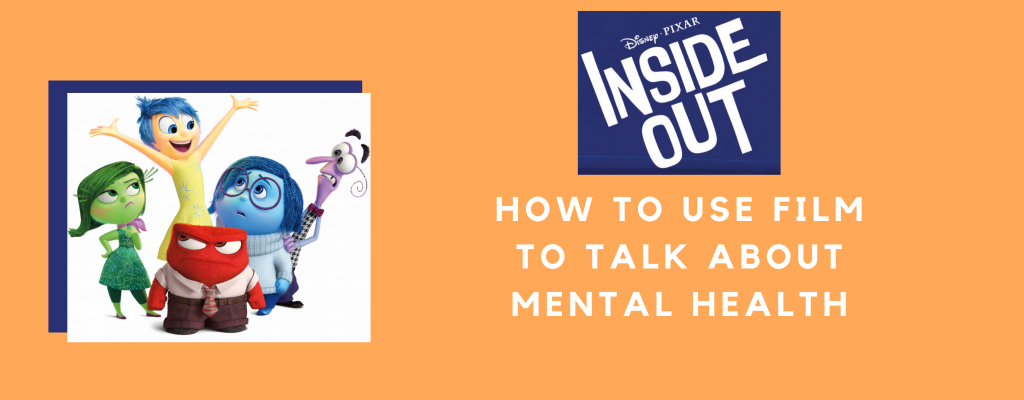
Disney’s Inside Out: A tool to talk about Mental Health
One of my favourite Disney movies is the 2015 animated film Inside Out. Winning a Golden Globe, the Academy Award for best animated film and many more, this film is an incredible movie and conversation piece.
When 11 year old Riley (Kaitlyn Dias) needs to move home, city and school she is faced with many obstacles as she adapts to her new life. Sharing in her journey are her 5 personified core emotions – Joy (Amy Poehler), Sadness (Phyllis Smith), Anger (Lewis Black), Fear (Bill Hader), and Disgust (Mindy Kaling). While the film is targeted at our youth, it does not shy away from commenting on the complexity of our emotions. Dacher Keltner, Ph. D., a professor of Psychology and the founder of the Greater Good Science Center helped to ensure the film stayed close to truth to ensure the takeaways are powerful and helpful.
The film highlights some pretty serious elements of mental health and the role our emotions play but the inventive and captivating story line, plus the incredible animation work, makes this a film for the whole family. Some of the more notable moments make the film a great source for teachable moments in the classroom or around the dinner table.
4 Lessons that teach positive Mental Health from the movie Inside Out
Caution! Spoiler alert.
It’s normal to change as we grow
“After all, Riley’s eleven now, what can go wrong?” This is one of the first lines shared by the narrator, Joy. It’s a great foreshadowing of the events to come. Immediately following this statement, is a scene with a ‘For Sale’ sign and a moving van indicating that so much can change. The quick change in mood is a great representation of life’s rapid rate of change and development. This is a great starting lesson as it helps us to normalise that things can (and do!) change and evolve. Especially as we begin the transition from childhood to adolescence. This scene acts as the catalyst for the film’s theme of growth and development.
Teachable moment: As so much change is happening at the moment, this can be a great ice breaker to discuss what’s different and how we can adapt to unknown and different situations.
Sadness and Joy are both necessary for Mental Health
Sadness, the unexpected heroine of the film, helps us to understand that being sad is a normal and healthy process.
While some may choose to turn a blind eye and pretend it does not exist, it is important to acknowledge that we need Sadness to experience Joy. They work together.
This is beautifully portrayed when Joy reverses the Memory of when the Prairie Dogs lost the big Playoff game and Riley missed the winning goal.
While Joy only remembered the part about the team celebrating Riley, Sadness remembered that Riley felt so sad about missing the shot, she wanted to quit the team.
This sadness pulled her parents into comfort and empathise with her, and let her team know that she needed a bit of cheering up. Sadness was the precursor to her joy.
This is a pivotal moment where Joy realises that Sadness can help family and friends to support us.
Teachable moment: It’s important to build resilience without undermining our need to process difficult situations. Sharing some of these tactics to deal with the big feels can help children cope.
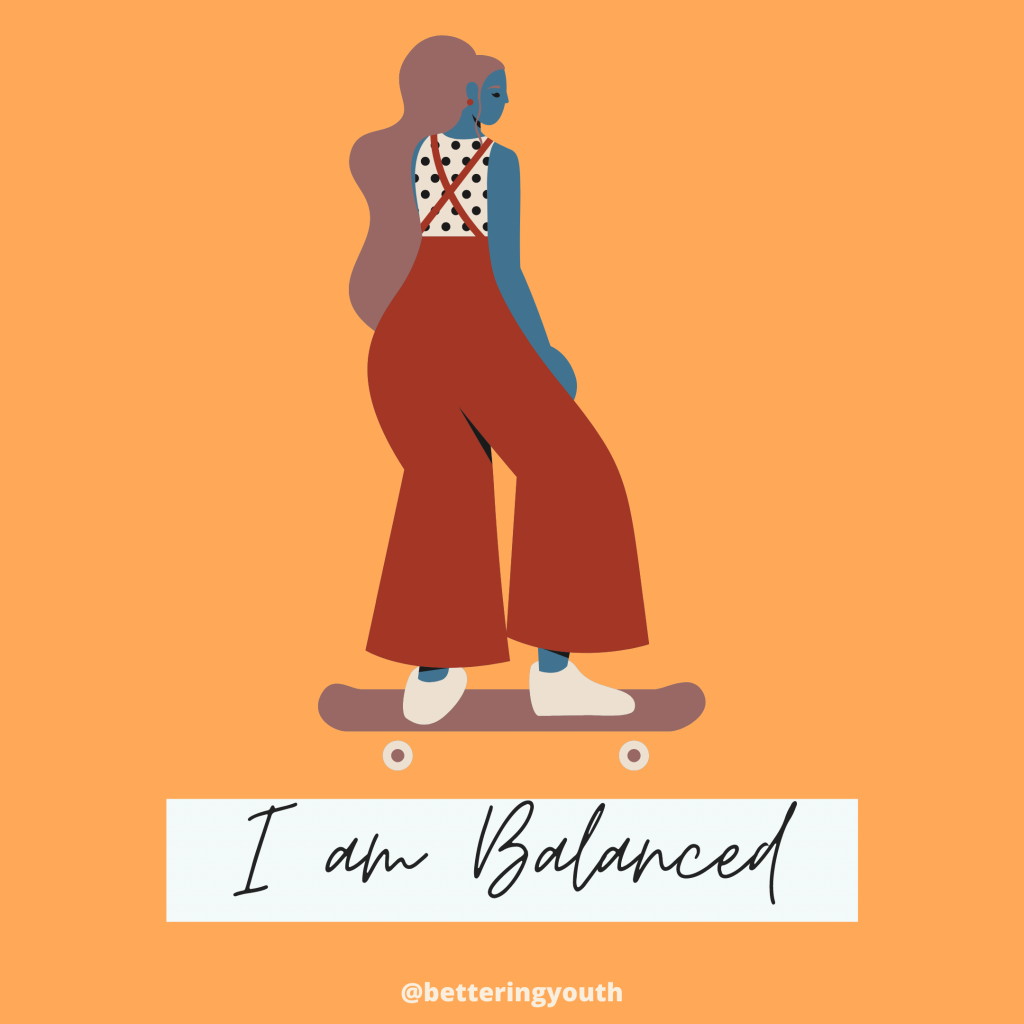
Sadness helps to create empathy and connection
After Joy attempts to cheer Bing bong up following the loss of his Rainbow Rocket, Sadness steps in.
She is sad with Bing bong for she can understand that he has lost something that was of importance to him.
Her connection with Bing bong allows him to share a few memories, letting him find the strength to stop crying and get back to the task at hand. This moment is an incredible demonstration of empathy and how it leads to connection.
While Sadness is sad for Bing bong, she does not make it about her, nor does she share her own feelings. She simply shares that she is sorry, that it is sad, and opens a dialogue about how Bing bong is feeling.
This is a powerful skill that allows for deeper and more meaningful connection.
Teachable moment: Empathy is an incredible skill that allows for great and meaningful connection. However it can be wrongly demonstrated in the form of sympathy. Teaching children the difference between empathy and sympathy through word prompts and role play can help them socially.
As we develop, more feelings will begin to colour our experience
Riley, often referred to as ‘our happy girl’, has experienced a childhood filled with joy.
Most of her memories are yellow and Joy, the personified feeling, expresses her excitement of having ‘another great day’.
As the movie progresses we see that Sadness begins to colour some of her memories, including one of the Core Memories that helps to fuel the Islands of Personality.
This initiates the climax of the film which leads to Joy and Sadness leaving Headquarters thus leaving Anger, Fear and Disgust to help Riley navigate.
This is a wonderfully creative way to express the typical reflection of the pre-teen years when Joy is less present and more diverse feelings begin to show. In the films resolution, we see that Riley’s control board has been upgraded. Now, each feeling has the ability to interact with the moments. This is demonstrated by the multicoloured Memory balls.
Teachable moment: Feelings can be tricky! Especially because how we experience them can feel similar. For example, when we feel Fear we can experience an increased heart rate, and a heightened sense of awareness. This is comparable to when we feel excitement. So teaching children how to identify feelings and communicate them is a worthwhile objective.
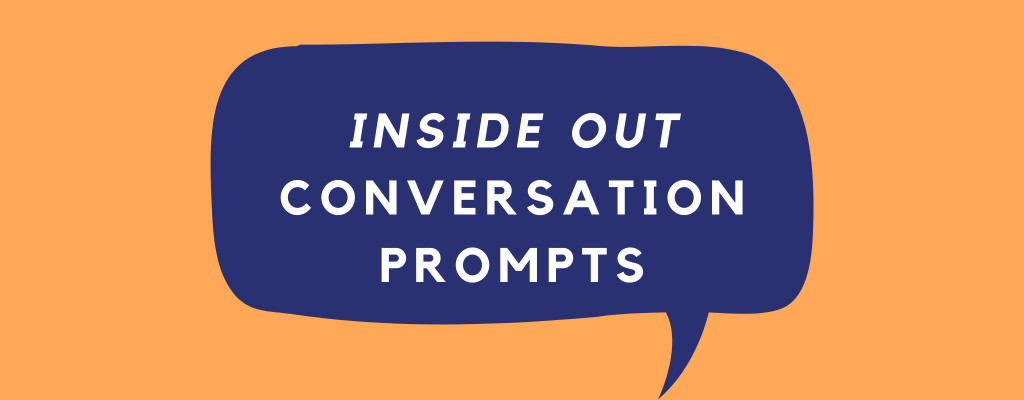
How to talk to your child about Mental Health after you watch Inside Out
- How do you think being referred to as “happy girl” makes Riley feel?
- Do you think the Islands of Personality can change for everyone? Do you think they have changed for you as you’ve grown?
- Will all big transitions can impact our personality by altering the Islands of Personality? Is it a negative thing?
- When Riley experienced a new situation (deciding to run away) all of her Feelings started to panic and talk over one another. The feeling of racing thoughts is similar. For Riley, Joy was the main Feeling that helped navigate the situation. Which Feeling typically takes over for you?
- Bin bong after losing his Rainbow Rocket, he sits on the edge of the cliff and weeps. Joy, determined to stay positive so they can get to Headquarters, tries to make Bin bong happy again. She tickles him, makes a goofy face and encourages him to play the game “where’s the train”. But nothing works. He continues to sit and cry candy. Then Sadness joins him. “I’m sorry they took your rocket, they took something that you loved, it’s gone, forever.” This moment proves to Joy, and viewers, that with empathy and connection, we can give others strength. Why do you think Sadness was able to help Bing bong refocus when all she did was talk about what made him sad?
- Upon moving to the new house, Riley’s dad becomes stressed and less playful which hurts Riley. Her mom asks Riley to keep smiling as it will be a big help for them. We know that Riley is not happy and doesn’t want to smile but she respects her mom’s wishes and doesn’t share her feelings. What could Riley’s parents have done differently to help Riley and avoid her wanting to run away?
Should students watch movies in class?
I am a strong advocate for teaching to the child. This means the format of our lessons are not always traditional. We aim to engage the children, create real world connections and spark great critical thinking skills. One of the ways we achieve this is by bringing film into the lessons.
Watching movies is a great way to talk about Mental Health and help children connect to an abstract concept.
- The images help us to become immersed in the world so it avoids reading and not fully understanding.
- Film can help some students understand or make sense of social interactions.
- It can offer a variety of perspectives.
- Watching movies can develop inferencing, deduction and critical thinking skills.
- Movies can help children develop their belief and communication skills.
- If used appropriately, film can help children understand the detail that must be included in their own writing.
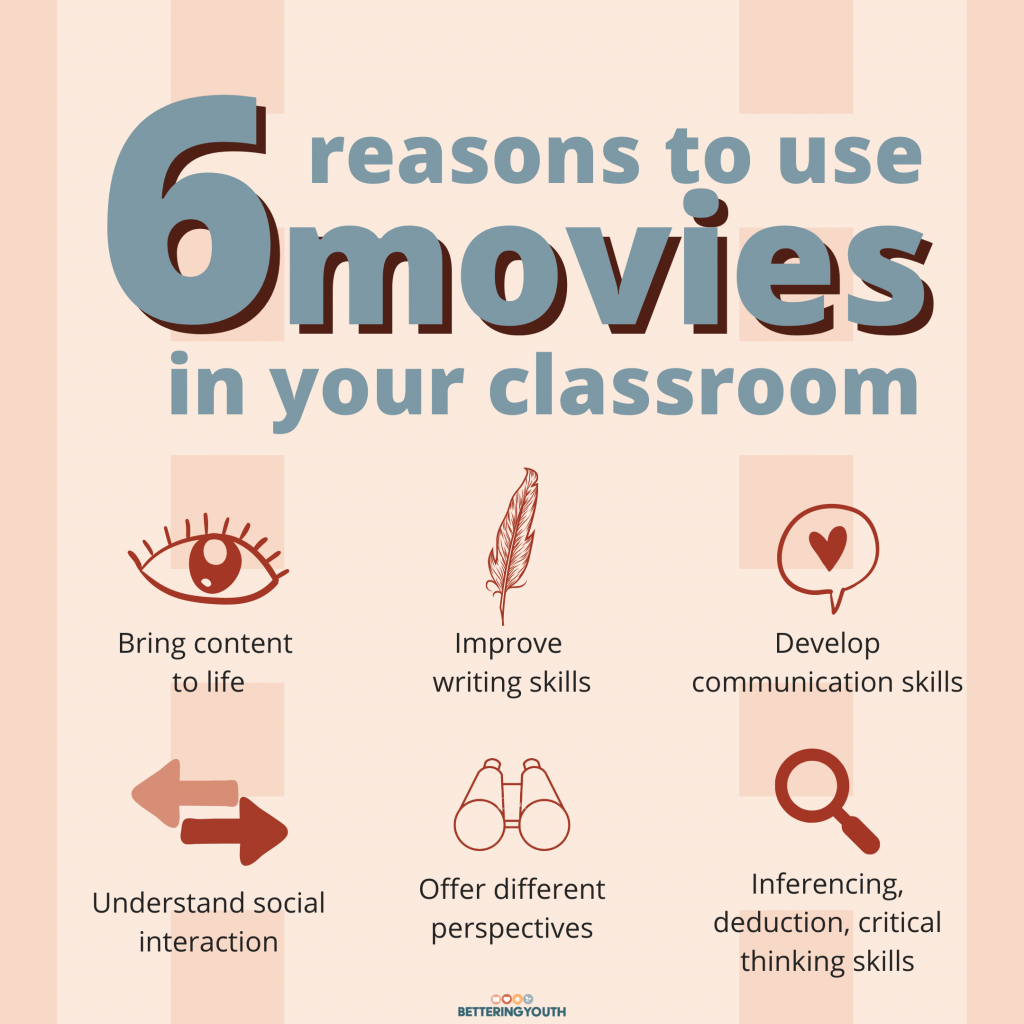
Setting the stage to watch a film in class
One of my favourite times to introduce a film is when we need to discuss human relations. PSHE classes often require students to learn about their relationship with self, others and the world. What better way to give them a platform to pull ideas from then films.
When we use movies to talk about Mental Health, we are giving children a reference point, a character to connect an idea with, and the language to share their opinion. This helps to facilitate conversation that is free-flowing, non-judgemental and very profound.
So how to begin? Set the expectations from the onset.
If you’re in a classroom, make sure that your students are aware that paying attention is non-negotiable. Always praise the behaviour you’d like replicated. And assign each student (or students you know may need help paying attention) with a task.
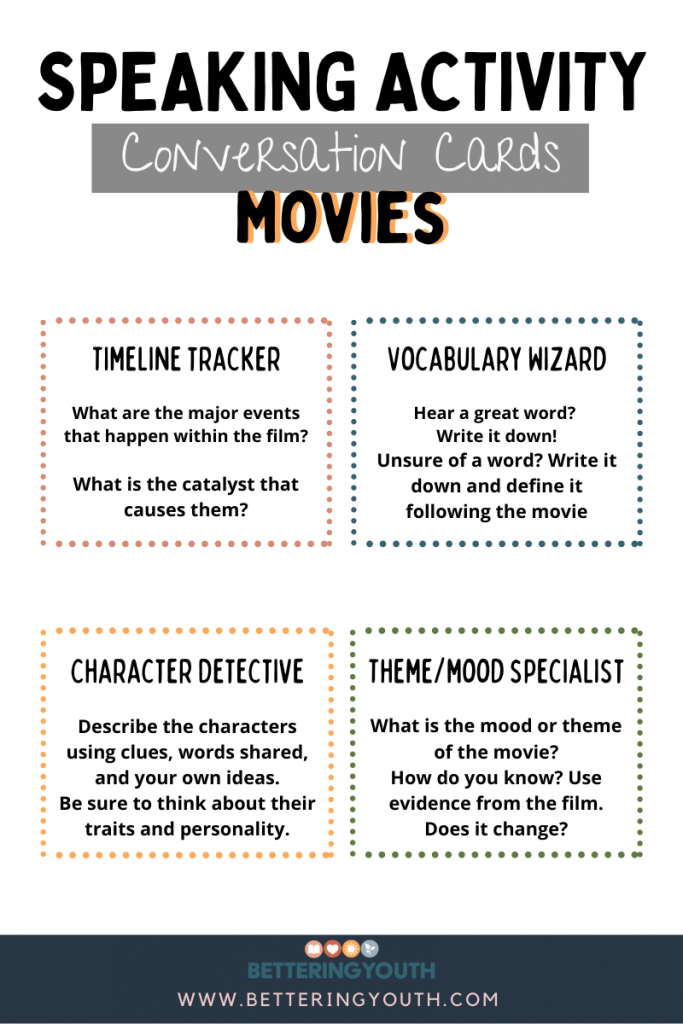
If you’re a parent, you can approach this for home education with a more relaxed attitude as chances are your child will stay focused and undistracted by their peers. Use the classroom management techniques shared above to help with attention.
Did you love hearing how we use movies to talk about Mental Health? Check the blog that includes 5 mindfulness activities
More Blogs that support Children’s Mental Health:
Mental Health Awareness: 7 Pillars to Strong Mental Wellbeing
Eight Powerful things Disney’s ‘Frozen’ can Teach us About Mental Health
World Mental Health Day: How to champion mental health

Our Disney-Loving Mental Health Advocate
Sarahlynn is the head tutor, mental health coach and voice behind our Inside Out blogs. She is a strong believer in providing ample opportunity to discuss emotional wellbeing with children in a relaxed environment. This is why she has created emotional wellbeing coaching programmes that are successfully delivered one to one.

Pingback: Inside Out inspired activities to boost emotional wellbeing - Bettering Youth
Pingback: How to Bring Black History to life in UK classrooms - Bettering Youth
Pingback: Eight Powerful things Disney's 'Frozen' can Teach us About Mental Health - Bettering Youth